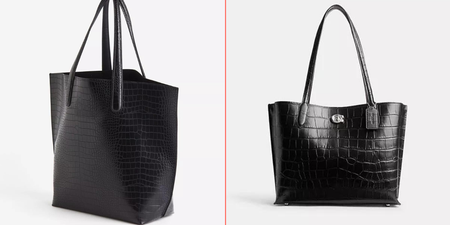‘Women’s issues’ affect people of all genders, just as ‘violence against women’ is not a female problem.
*This article contains mentions of sexual assault and rape.
The term ‘violence against women’ is often used to discuss a range of issues – sexual assault, domestic abuse, femicide, coercive control, and more.
But does the term itself, although often all-encompassing, truly lend to identifying the prominent factor in so many of these cases – men?
‘Violence against women’ can take the agency away from the perpetuator, often reflecting what has happened to a woman, instead of who did what to her. Rather than focusing on the person committing violence, we focus heavily on the victim and their own actions – an issue that, irrespective of the ways we speak about these kinds of violent acts, tends to vastly be the case across the board.
It’s not language committing sexual assault, it’s people. It’s not words murdering women, it is, for the most part, men. But as it stands, it’s still predominantly women being told to protect themselves, and it’s still predominantly men being told nothing.
According to Women’s Aid, every one in two women murdered in Ireland are killed by their partner or former partner. 87% of women killed in Ireland knew their attacker, while 62% were killed in their own homes.
Speaking of male violence instead of female targeting won’t stop these acts from happening, but it could lead to greater onus being put on the perpetrators of violent acts, instead of what women should be doing to keep themselves safe.

The Metropolitan Police were criticised last week following the sentencing of police officer Wayne Couzens for the murder of Sarah Everard.
Everard, a 33-year-old marketing executive, was killed while walking to her home in London earlier this year. Couzens, off-duty at the time, produced his ID card and handcuffs, “arresting” Everard before kidnapping and murdering her. Her body was discovered in a woodland near Couzens’ Kent home.
After the sentencing, the Met Police released a list of ways that women can keep themselves “safe” – in the streets, in public spaces, and in the company of police officers.
The “guidance” was harshly criticised, not just for its bizarre advice to “flag down a bus” if you think a police officer is acting suspiciously, but for its blatant inability to recognise the true source of this violence: men. And in this case: a male police officer.
Earlier this year, Irish author Anne Enright spoke of the unjust focus that the judicial system – and society as a whole – puts on the actions of victims, rather than that of their perpetrators. Writing in the Irish Times, she asked why we don’t speak about ‘male violence’, and how the words we use too often eradicates male agency from the equation.
“Men do not just disappear in court, they disappear from the discussion, they disappear from the language we use,” she said. “Rape is described as ‘a women’s issue’. We speak of ‘women’s safety concern’”, not ‘concerns about men’s violence’.”
Femicide isn’t the only act where men are often removed from the situation, and oftentimes saved from culpability. How many times have we heard the phrases ‘She got herself pregnant’ or ‘She was drunk’ when speaking about incidents that also involve the actions of men?
When we speak of ‘women’s issues’, we speak of a plethora of things: violence, healthcare, murder, employment, motherhood, abortion, assault, pay gaps, the list goes on. But we also presume that these problems are just that – for women, belonging to them, pertaining only to them.
‘Women’s issues’ affect people of all genders, just as ‘violence against women’ is not a female problem. Language is important, but so are actions – and the two may be more intertwined than we think.















































